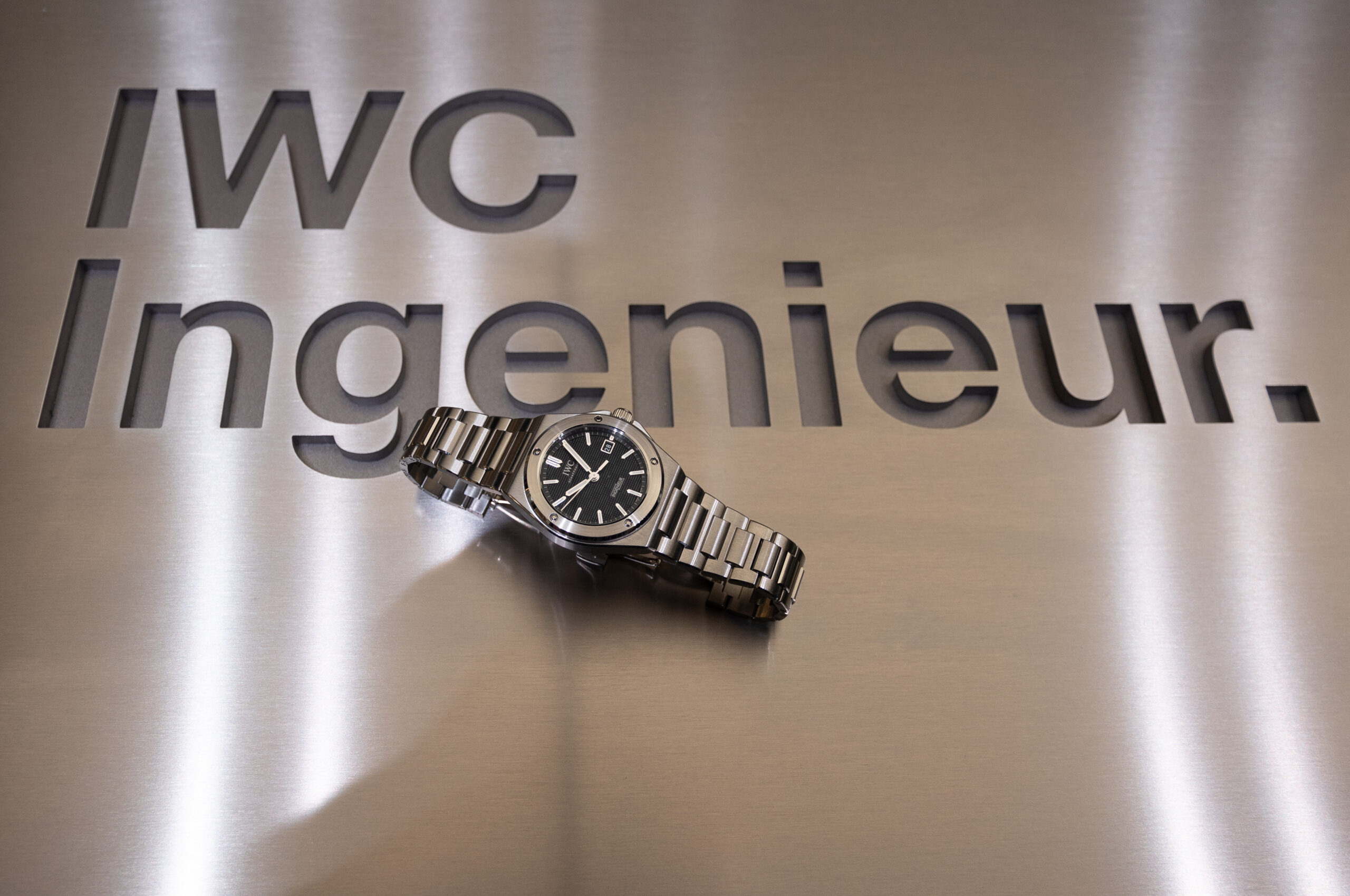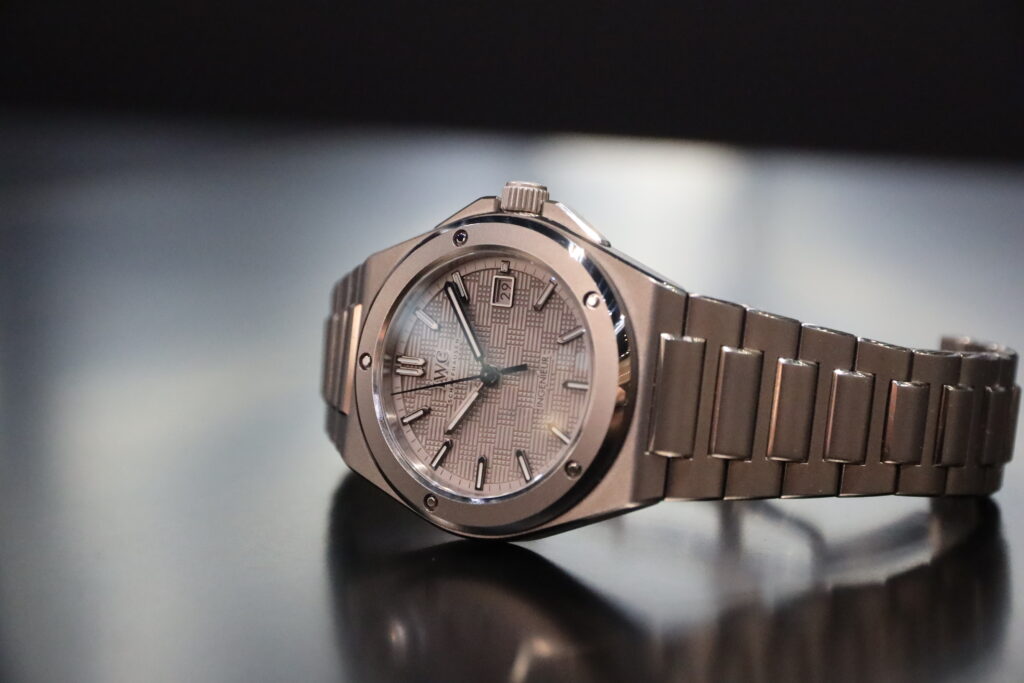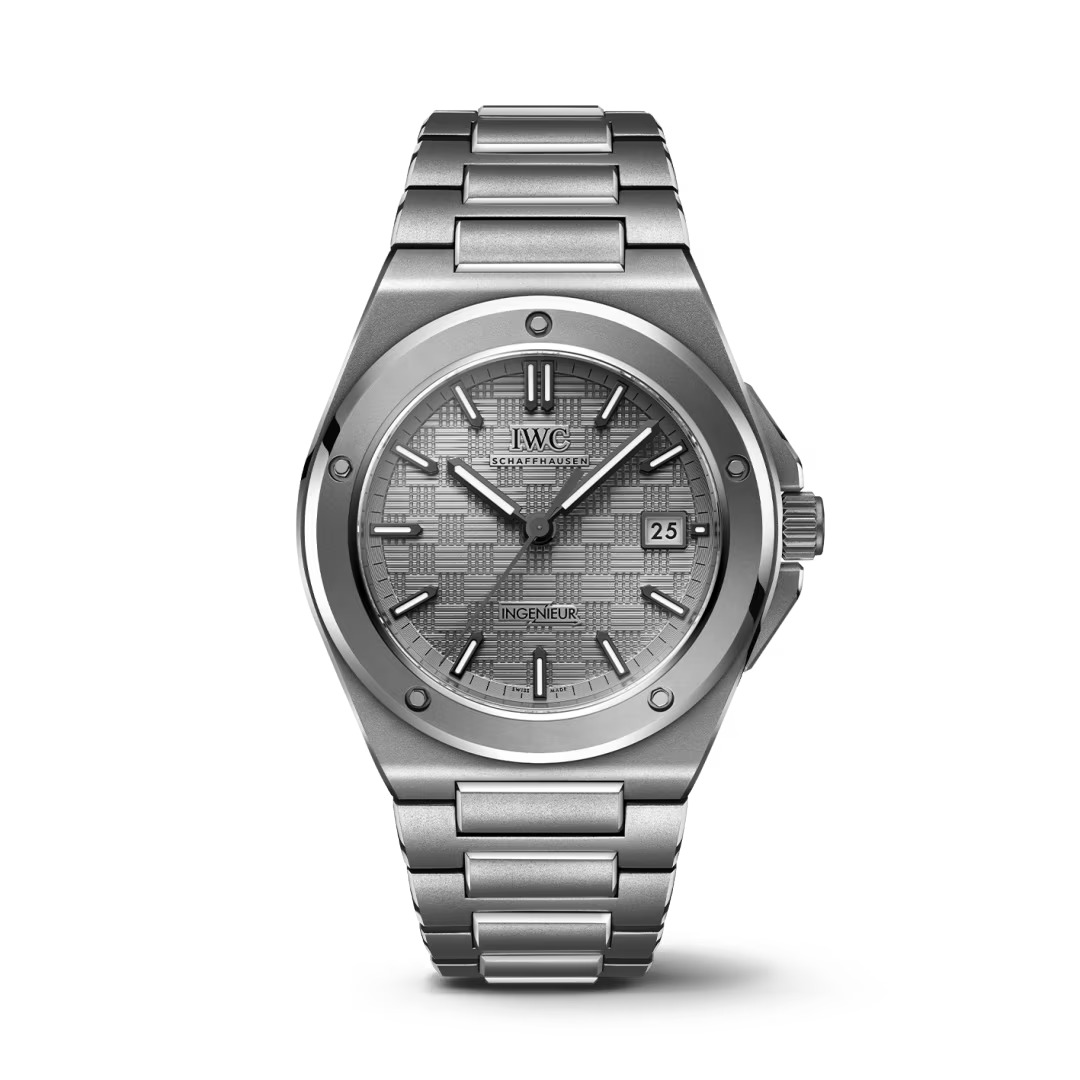BY HARLAN CHAPMAN-GREEN
Some brands, like Rolex, had many different releases to share for Watches & Wonders Geneva, a hallmark of their efforts. But, IWC only had one new collection of watches for its contribution to the show this year, although the Ingenieur is one of their most important watches. That’s right, for 2023, IWC has re-invigorated the Ingenieur yet again and gotten closer to the roots of the design as we know it today.
While the Ingenieur was introduced by IWC in the mid-50s as a tool watch of the day with a simple round case and clean dial, it would take another two decades for the Ingenieur to get anywhere close to resembling the watch we know of today. The Ingenieur was re-imagined by none other than Gérald Genta, who IWC hired undoubtedly after seeing the success Genta had with the Audemars Piguet Royal Oak and Patek Philippe Nautilus. What Genta did was take the simple-yet-sturdy Ingenieur of the past and put the innovation IWC stored inside the watch on display in the form of a sleek barrel-shaped case that flowed into its bracelet.
That design stuck around with IWC for a while and was last re-invigorated in 2013. For 2023, IWC changed the design of the Ingenieur to be a bit classier and closer to Genta’s design roots, and they succeeded.
IWC kindly invited me to an evening at their stand in Palexpo and trusted me with their watches so that I could get some photos for you. I’m pleased to report that the Ingenieur is an excellent watch on the wrist, whichever colour (or metal) you choose. While it is a simple watch, horologically speaking, its design is quite complex with multiple different layers, surfaces, finishes and angles.
On the wrist, the combination of brushing and polishing works wonders, as this style of finish usually does. At 40mm across, this watch wears larger than its dimensions suggest, but it cuts across my wrist with ease and never seems bulky. Perhaps the relatively short lugs help with that. Either way, it’s at the “Goldilocks” stage of wearability for me, and with the integrated bracelet tapering off towards the butterfly clasp, it was a great watch to wear.
Despite the finish being “industrial”, which to me conjures images of CNC machines doing every task, the Ingenieur has a top-quality feel to it. The brushing of the bezel, case and bracelet catch the light in just the right way, and the polished hands and markers add to the sparkle-fest. The texture of the dial is quite similar to that of Genta’s Ingenieur, although it looks to have been enlarged for the new model.
The dials are very clear, as IWC dials tend to be, and come in a choice of three colours: black, blue or opaline, which is somewhere between silver and white. My favourite was the white dial, which surprised me, but it was clear and had a classy look to it which the Ingenieur takes on very well. If you’ve looked closely at the photos, you may have noticed that the watch with the blue dial has a slightly different bracelet. The square centre links of this bracelet have been polished all over for an even dressier look. You could probably swap these over if you like a different dial colour.
Now, if you were reading my words carefully earlier, you may have noticed that I hinted at something. The watches I’ve talked about so far are made from stainless steel, but IWC released a fourth Ingenieur model, which is made from titanium. The finishing of this one is different from the rest, with the case taking on an alternating blasted/polished appearance. That makes the titanium watch look entirely different to the other three. Titanium’s naturally darker hue also adds to this. The dial also takes on a dark silver colour to match.
Inside the Ingenieur is an in-house-made calibre 32111, which replaces the Sellita movement that was used before. This is a thoroughly modern calibre, with a power reserve of 72 hours and a 4Hz frequency. There’s plenty of Côtes de Genève finishing applied to the plates of this movement, but in true Ingenieur fashion, it’s obscured by a soft iron cage and a closed caseback.
That soft iron cage design, which was first used by IWC in 1955 for their 11th generation pilot’s watch, has been in use all the way throughout the Ingenieur’s history and serves precisely the same purpose today. By shrouding the movement, it effectively creates a Faraday cage around the movement to shield it from the effects of magnetism.
The only chink in the Ingenieur’s armour is its price tag. At $11,700 in stainless steel or $14,600 in titanium, before tax, it’s expensive. I struggled to understand why that was the case. Perhaps it’s the new movement, or maybe IWC bought some new equipment to make these and is passing on the cost to the end consumer. Either way, the price is the only issue I had, and if this is IWC’s version of the perfect wristwatch then I’m a big supporter.
Follow WristReview by allowing us to send you notifications of when we release something new, as we have an interview with this watch’s designer, Christian Knoop, lined up.
















